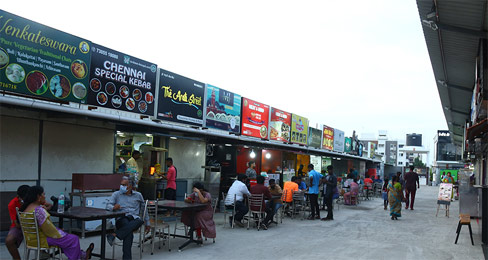Description

Copyright infringement not intended
Context: The Union Minister of Health and Family Welfare reviewed the 'Food Street Project,' which strives to build 100 healthy and hygienic food streets across the country to encourage safe and healthy food practices, minimise foodborne diseases, and enhance overall health outcomes.
Details
Food Street Project
- It is an ambitious initiative by the Ministry of Health and Family Welfare to promote healthy eating habits and hygiene standards among the citizens of India.
- The project aims to create 100 food streets across the country, where vendors will sell nutritious and delicious food items that meet the guidelines of the Food Safety and Standards Authority of India (FSSAI).
Significance
- The Food Street Project is based on the concept of food streets, which are clusters of food stalls and vendors that offer a variety of local cuisines and snacks in a lively and informal setting.
- Food streets are not only a source of delicious and affordable food but also a place for social interaction, cultural exchange and community building. They reflect the diversity and creativity of India's food culture, as well as its history and geography.
Working Model
- The Food Street Project works with local communities, authorities and stakeholders to identify, develop and manage food streets in different cities across India.
- The project provides training, mentoring and support to the food vendors, who are mostly women and youth from marginalized backgrounds.
- The project also helps them improve their hygiene, quality and sustainability standards, as well as their marketing and branding skills.
- The project also organizes events, festivals and workshops to showcase the food streets and attract more customers and tourists.
.jpeg)
Street food
About
- Street food is a popular and convenient way of eating for many people around the world.
- It offers a variety of dishes that reflect the local culture and cuisine, and it is often cheaper and faster than eating in a restaurant.
- However, street food also poses some health risks due to the lack of proper hygiene and sanitation practices among some vendors.
Suggestions to Ensure Hygienic Standards of Street Food
Use of a scoring system
- Use a scoring system that rates the vendors based on their compliance with certain criteria, such as the cleanliness of utensils, cooking equipment, food handling, storage, and waste disposal.
- This system can help consumers make informed choices about where to buy their food, and it can also motivate vendors to improve their practices to attract more customers.
- A scoring system can also provide data for public health authorities to monitor and evaluate the street food sector.
Conduct quality tests on samples of food
- Conduct microbiological tests on samples of food and water used by the vendors. These tests can detect the presence of harmful bacteria, viruses, parasites, or toxins that can cause foodborne illnesses.
- Microbiological tests can also help identify the sources of contamination and the potential outbreaks of diseases. However, these tests are costly and time-consuming, and they may not be feasible for all vendors or locations.
Promote and enforce good hygiene practices
- To promote and enforce good hygiene practices in the street food sector, several strategies can be implemented.
- Provide education and training for vendors on how to prepare, cook, serve, and store food safely and hygienically. This can include topics such as personal hygiene, hand washing, temperature control, cross-contamination prevention, pest control, and waste management.
- Education and training can also raise awareness among vendors about the benefits of good hygiene practices for their health, income, and reputation.
Establish and enforce regulations and standards
- Establish and enforce regulations and standards for street food vendors that specify the minimum requirements for hygiene and sanitation.
- These regulations and standards can cover aspects such as licensing, inspection, certification, labelling, packaging, and quality control.
- Regulations and standards can also define the penalties for non-compliance or violations, such as fines, suspension, or closure. However, these regulations and standards need to be realistic, appropriate, and consistent with the local context and culture.
Involve and empower the stakeholders
- Involve and empower the stakeholders in the street food sector, such as consumers, vendor associations, community groups, NGOs, media outlets, and academic institutions.
- These stakeholders can play an important role in promoting good hygiene practices by providing feedback, support, advocacy, information dissemination, research, innovation, and collaboration.
- They can also help create a culture of trust and accountability among street food vendors and consumers.

Conclusion
- The Food Street Project aims to create more than 100 food streets, covering all the major states and union territories. The project hopes to revive and celebrate India's culinary heritage, as well as empower and uplift the food vendors and their communities.
Must Read Articles:
Food Safety and Standards Authority of India (FSSAI): https://www.iasgyan.in/daily-current-affairs/food-safety-and-standards-authority-of-india-fssai
|
PRACTICE QUESTION
Q. Street food is a popular and convenient way of eating for many people around the world. However, it also poses some health risks due to the lack of proper hygiene and sanitation practices among some vendors. How can we assess the significance of hygienic standards on the quality and safety of street food? How can we promote and enforce good hygiene practices in the street food sector?
|
https://newsonair.gov.in/News?title=Health-Minister-Mansukh-Mandaviya-reviews-%e2%80%98Food-Street-Project%e2%80%99-to-develop-100-healthy%2c-hygienic-Food-Streets-across-the-country&id=460397













